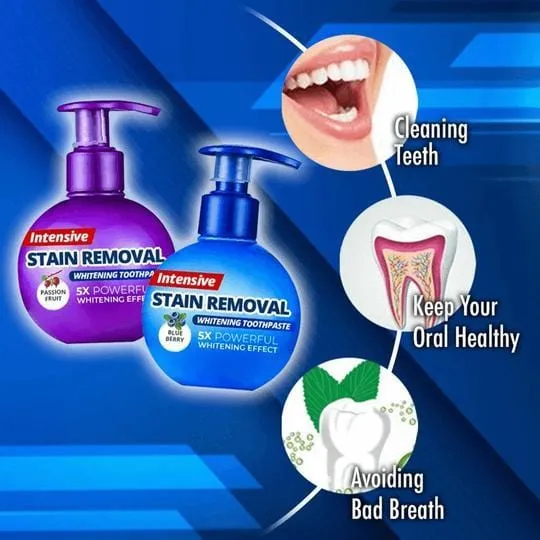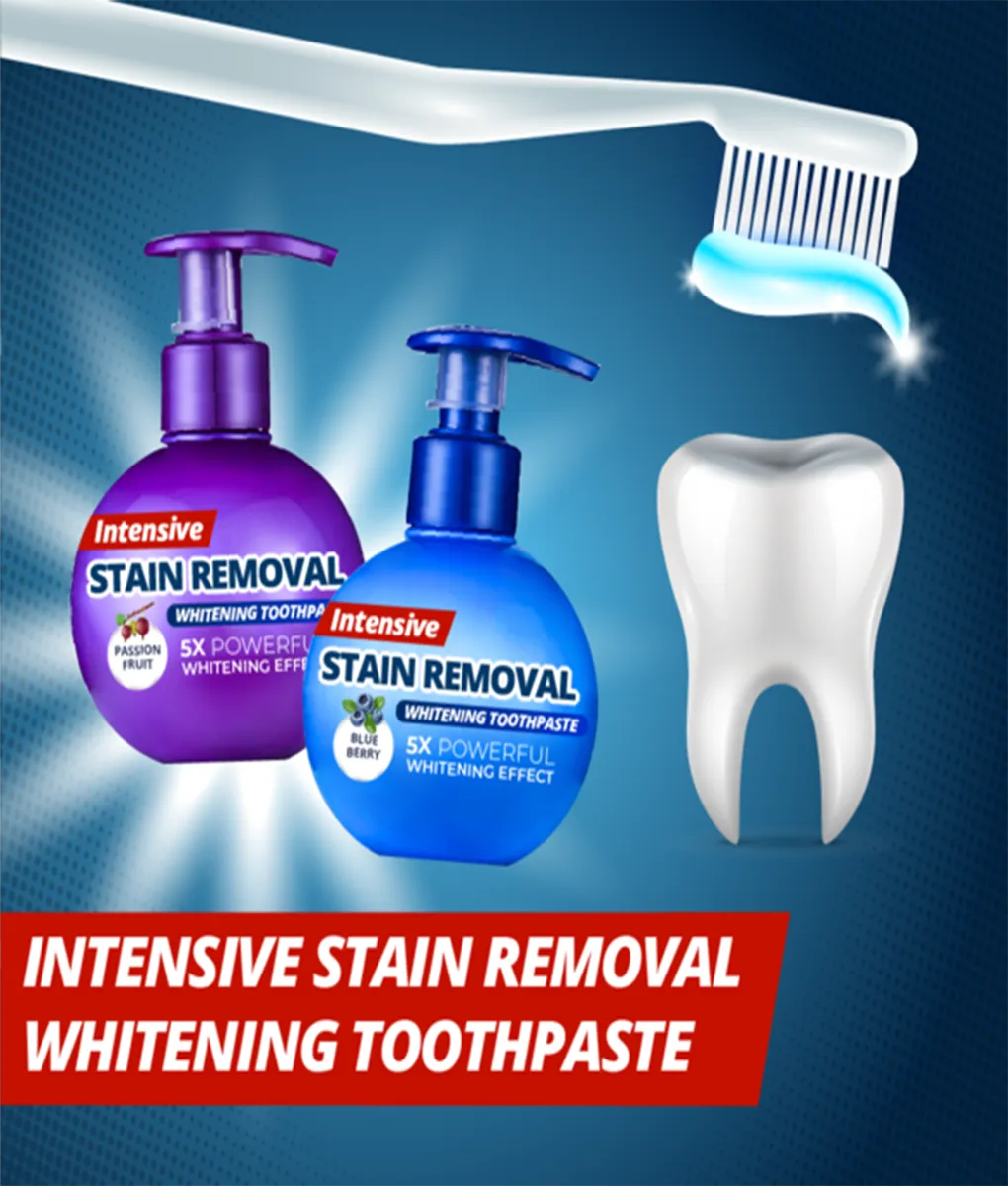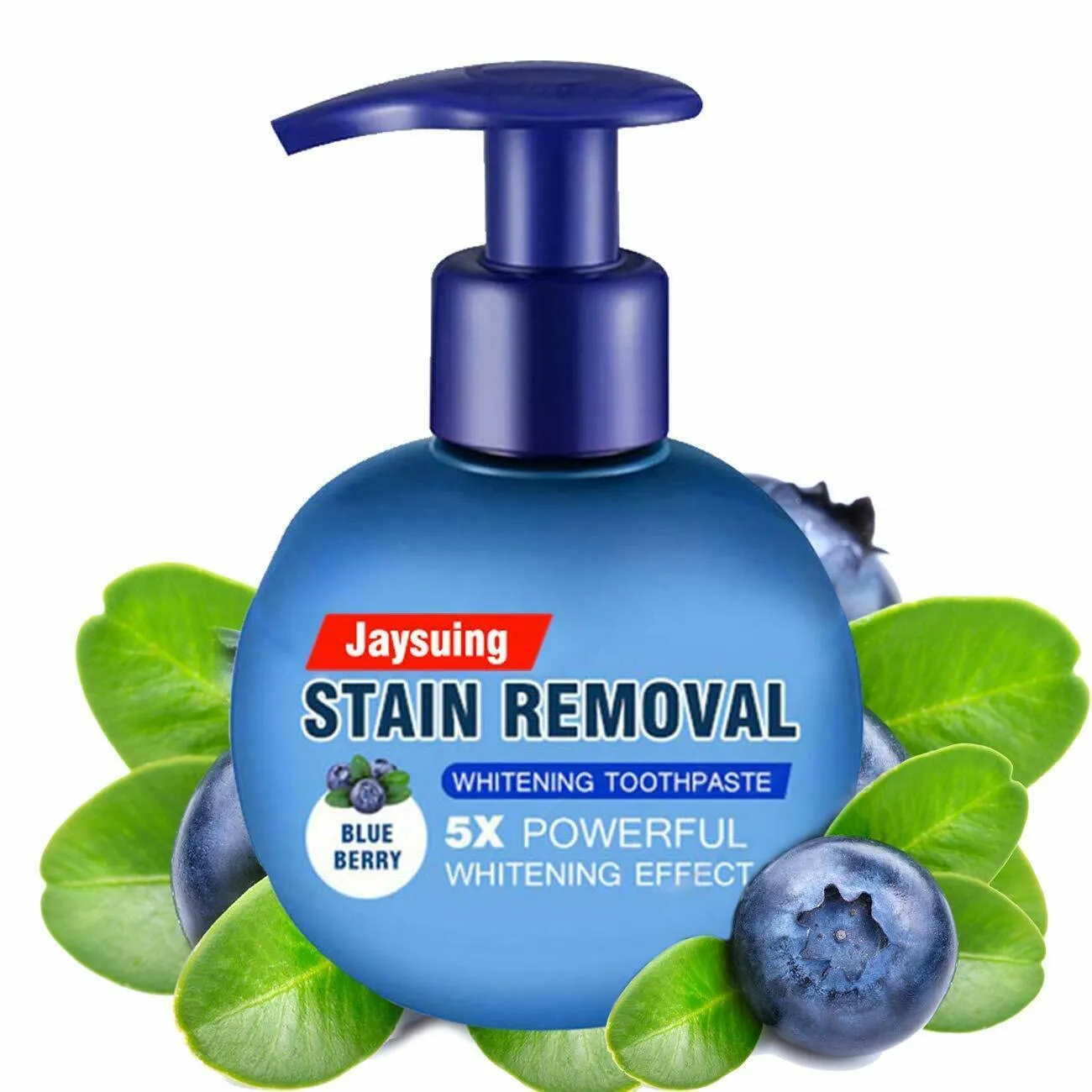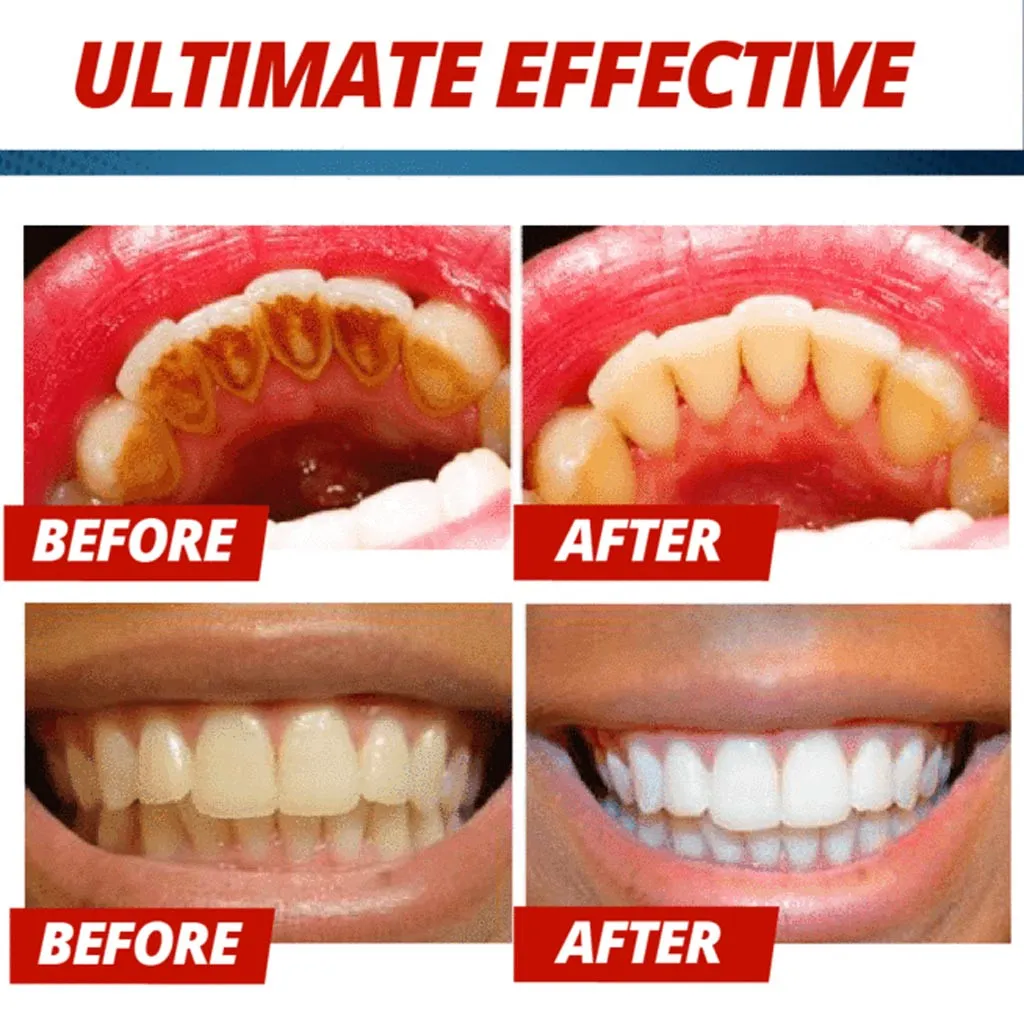Understanding Tooth Stains and Discoloration
Tooth stains and discoloration are common concerns that affect the brightness and appearance of our smiles. These imperfections arise from various factors, including dietary choices, lifestyle habits, and aging. Understanding the different types of stains is the first step in effectively addressing and removing them. Whether caused by the foods we eat, the beverages we drink, or even the natural aging process, stains can impact our confidence and overall oral health. Recognizing the underlying causes allows for a more targeted approach to restoring the natural brilliance of our teeth and achieving a healthier, more vibrant smile. Effective stain removal is not just about aesthetics; it also contributes to improved oral hygiene and a better overall sense of well-being. This knowledge empowers individuals to make informed choices about their dental care and take proactive steps toward achieving the bright, healthy smile they desire.
Types of Tooth Stains
Tooth stains are broadly categorized into two main types extrinsic and intrinsic. Each type of stain has different causes and requires different methods for removal. Recognizing the specific type of stain that affects your teeth is crucial for choosing the right whitening toothpaste and achieving the best results. Understanding these distinctions will help you make informed decisions about your oral care routine and effectively target the specific issues affecting your smile.
Extrinsic Stains

Extrinsic stains are those that affect the surface of the tooth, specifically the enamel. These stains are typically caused by external factors, such as the consumption of deeply pigmented foods and beverages. Common culprits include coffee, tea, red wine, and certain fruits and vegetables. Additionally, smoking and tobacco use can significantly contribute to extrinsic stains. These stains are usually easier to remove as they primarily affect the surface layer of the teeth. Whitening toothpastes often work effectively on extrinsic stains because their abrasive agents can help to gently scrub away the discoloration. Regular brushing, flossing, and professional cleanings are also beneficial in preventing and removing these surface stains. The key is to remove them before the stains go below the surface.
Intrinsic Stains
Intrinsic stains are those that originate from within the tooth structure itself, specifically the dentin. These stains can be caused by various factors, including the use of certain medications, such as tetracycline, during tooth development, excessive fluoride exposure, or trauma to the tooth. Intrinsic stains are generally more difficult to remove than extrinsic stains because they are embedded within the tooth’s structure. Whitening toothpastes may have a limited effect on these types of stains, and more advanced treatments, such as professional teeth whitening or dental veneers, may be necessary to achieve desired results. Because the staining is internal, it is harder to remove the stains, the best way to maintain clean teeth is to brush and maintain proper oral hygiene.
How Whitening Toothpaste Works
Whitening toothpaste works through a combination of mechanical action and chemical processes to remove stains and brighten the appearance of teeth. The effectiveness of a whitening toothpaste depends on the ingredients used and how they interact with the tooth surface. It is important to understand the underlying mechanisms to make the best choices. The main ingredients and their role in the whitening process include abrasives, which physically scrub away surface stains, and bleaching agents, which penetrate the enamel to lighten the tooth’s color. The combined action of these ingredients, along with regular brushing, helps to remove extrinsic stains and enhance the overall brightness of your smile.
Key Ingredients in Whitening Toothpaste

Whitening toothpastes contain several key ingredients that contribute to their stain-removing and whitening properties. Understanding these ingredients is essential for selecting the most effective product for your needs. The most common key ingredients include abrasives, which physically scrub the tooth surface to remove stains, and bleaching agents, such as hydrogen peroxide or carbamide peroxide, which penetrate the enamel to lighten the tooth’s color. Other important ingredients include fluoride, which strengthens the enamel and protects against cavities, and various flavoring agents that enhance the taste and user experience. Knowing the functions of these ingredients helps you make informed choices about your oral care routine and achieve the best results in terms of stain removal and overall oral health.
The Role of Abrasives
Abrasives play a crucial role in the stain-removing action of whitening toothpastes. These abrasive particles, such as hydrated silica, calcium carbonate, and dicalcium phosphate, gently scrub the tooth surface to remove stains and plaque. Their mechanical action is responsible for the immediate brightening effect often noticed after brushing. The effectiveness of the abrasive is determined by its abrasivity, which is measured by the Relative Dentin Abrasivity (RDA) value. It’s important to select a whitening toothpaste with an RDA value that is effective for stain removal without being overly abrasive, as excessive abrasion can damage tooth enamel. The goal is to clean effectively without causing harm.
The Power of Whitening Agents
Whitening agents are the chemical components in toothpaste that actually lighten the color of your teeth. The most common whitening agents are hydrogen peroxide and carbamide peroxide. These substances penetrate the enamel and dentin to break down the stain-causing molecules, resulting in a brighter appearance. The concentration of the whitening agent determines its effectiveness; higher concentrations generally yield quicker results. These agents work at a molecular level to lift stains, which provides a more thorough whitening effect than just surface cleaning. Understanding how these agents work can also help manage expectations about results and how quickly they can be achieved.
Benefits of Using Whitening Toothpaste for Stain Removal

Using whitening toothpaste offers several benefits beyond just stain removal. It can contribute to improved oral hygiene, enhance your smile’s aesthetics, and boost your overall confidence. Regularly using whitening toothpaste helps maintain a clean and healthy mouth. It removes stains and enhances the natural brightness of your teeth. These combined effects can have a positive impact on your self-esteem and overall well-being, making it a valuable addition to your daily oral care routine. Using whitening toothpaste is more than a cosmetic decision; it is an investment in both your oral health and your overall quality of life.
Improving Smile Aesthetics
One of the most immediate benefits of using whitening toothpaste is the improvement in smile aesthetics. By effectively removing surface stains, these toothpastes restore the natural brightness of your teeth, resulting in a cleaner and more vibrant appearance. This improved aesthetic not only enhances the overall appeal of your smile but also contributes to a healthier and more youthful look. Stains and discoloration can make teeth appear dull and aged, so whitening toothpastes can reverse these effects. The visible brightening effect can dramatically improve your confidence, making you feel more comfortable and self-assured in social and professional settings. This improved appearance has a significant impact on your personal image and how you interact with the world.
Boosting Confidence
A brighter, whiter smile is often associated with increased confidence and self-esteem. When your teeth are free of stains and appear healthier, you are more likely to smile openly and frequently. This can have a positive impact on your social interactions and your overall mental well-being. The feeling of confidence that comes from having a bright smile can extend to various aspects of your life, including your professional environment, personal relationships, and everyday interactions. Knowing that your smile is its best condition can make you feel more comfortable and self-assured in social situations. The simple act of using whitening toothpaste can therefore be a powerful tool in boosting your self-esteem and promoting a more positive self-image.
Enhanced Oral Hygiene

Whitening toothpastes often contribute to enhanced oral hygiene by promoting more effective cleaning and plaque removal. The abrasive action of these toothpastes helps to remove surface stains and plaque, preventing the build-up of harmful bacteria that can lead to cavities and gum disease. Many whitening toothpastes also contain fluoride, which strengthens the enamel and protects against tooth decay. The overall effect is a cleaner, healthier mouth, with a reduced risk of oral health issues. Combining whitening toothpaste with regular brushing, flossing, and professional dental cleanings is essential for maintaining optimal oral hygiene. This comprehensive approach not only enhances the appearance of your smile but also safeguards your long-term dental health, allowing you to enjoy a beautiful and healthy smile for years to come.
Choosing the Right Whitening Toothpaste
Choosing the right whitening toothpaste is important for achieving the best results while protecting your oral health. Several factors should be considered, including the ingredients, the RDA value, and your individual needs. Understanding these elements allows you to make an informed decision and select a product that effectively removes stains and enhances the brightness of your smile. It is important to consider your specific needs and preferences and to consult with a dentist if you have any concerns or are unsure about which product is best for you. Taking the time to research and compare different options can help you to find a whitening toothpaste that suits your oral care needs and contributes to a healthier, more beautiful smile.
Factors to Consider
Several factors should guide your choice of whitening toothpaste. Consider the type of stains you have (extrinsic or intrinsic), as this will influence the effectiveness of different products. Evaluate the ingredients, looking for effective stain-removing agents and those that support overall oral health, like fluoride. Pay attention to the RDA value, as this indicates the abrasiveness of the toothpaste; a lower RDA value is generally recommended to avoid enamel damage. Think about your sensitivity levels, as some whitening toothpastes can increase sensitivity. Finally, consider any personal preferences, such as the taste and texture of the toothpaste. Considering these factors will help you to narrow down your choices and select a toothpaste that effectively meets your needs.
Ingredients to Look For

When selecting a whitening toothpaste, it’s important to be aware of the key ingredients that contribute to its effectiveness. Look for toothpastes containing abrasives like hydrated silica, which gently scrub away surface stains. Hydrogen peroxide or carbamide peroxide are effective bleaching agents that lighten the color of your teeth. Fluoride is also a crucial ingredient, as it strengthens tooth enamel and protects against cavities. Some toothpastes include additional ingredients, such as potassium nitrate, to reduce sensitivity. Check the label for these ingredients and ensure that the product is designed to address your specific needs. Choosing a toothpaste with the right combination of effective ingredients will significantly improve its ability to remove stains and improve the appearance of your smile.
Understanding Product Labels
Understanding product labels is essential to making informed choices about whitening toothpaste. Carefully examine the ingredient list to ensure that the product contains effective stain-removing and whitening agents. Pay attention to the RDA value (Relative Dentin Abrasivity), which indicates the abrasiveness of the toothpaste. Lower RDA values are generally recommended to minimize the risk of enamel damage. Look for any claims made by the manufacturer, such as those related to stain removal, whitening, and sensitivity reduction. Knowing how to interpret the information on the label empowers you to select a toothpaste that aligns with your oral health goals and preferences. Always read the label carefully to avoid any ingredients you might be allergic to or those that may not be suitable for your specific oral care needs.
Blueberry Whitening Toothpaste Benefits
Blueberry whitening toothpaste offers unique benefits that combine stain removal with the potential health advantages of blueberries. These toothpastes typically incorporate blueberry extracts or flavors, offering a refreshing experience. While the primary function remains stain removal, the inclusion of blueberries brings several benefits. The antioxidant properties may help promote overall oral health. The distinctive flavor profile can make brushing more enjoyable, encouraging better oral hygiene habits. Using blueberry whitening toothpaste can be a delightful way to enhance your smile while potentially adding extra oral health benefits. As with any whitening toothpaste, it is important to be aware of any potential side effects. Choose blueberry toothpaste as part of a comprehensive oral care routine that includes regular brushing, flossing, and dental check-ups.
Antioxidant Properties

Blueberries are packed with antioxidants, which can offer several oral health benefits. Antioxidants help to neutralize free radicals, which can damage cells and contribute to inflammation. This is relevant because inflammation can worsen certain oral health conditions. The antioxidants in blueberry extracts may contribute to reduced inflammation in the gums and other soft tissues of the mouth. While more research is needed to fully understand the impact of blueberry extracts in toothpaste, the potential antioxidant properties are a notable advantage. By incorporating a product with antioxidant-rich ingredients, you might contribute to a healthier oral environment. This additional benefit provides a promising angle for those seeking oral hygiene beyond just stain removal and teeth whitening.
Flavor Profile
The flavor profile of blueberry whitening toothpaste can significantly enhance the brushing experience, making it more enjoyable and encouraging more consistent oral hygiene habits. A pleasant taste can help combat any aversion to brushing, especially in children and those who find traditional toothpaste flavors unappealing. The unique and appealing flavor can make brushing more enjoyable. This encourages longer and more thorough brushing sessions. Choosing a toothpaste with a flavor you enjoy can make a significant difference in your overall dental care routine. Regular brushing can lead to improved oral health, helping to keep teeth clean and free from plaque buildup. This flavor aspect is key to creating a positive relationship with oral hygiene, helping to improve your smile and overall oral well-being.
Tips for Effective Stain Removal with Whitening Toothpaste
To maximize the effectiveness of whitening toothpaste for stain removal, it is important to follow specific guidelines and adopt a comprehensive approach to oral care. Regular brushing, proper technique, and consistent use are essential for achieving the best results. Incorporating other oral hygiene practices and being mindful of your diet can also significantly enhance the whitening effect and protect your teeth from future stains. By following these recommendations, you can take proactive steps toward a brighter, healthier smile. This holistic approach promotes effective stain removal and ensures the long-term health and appearance of your teeth. Consistency and a proactive approach are the keys to maximizing the effects of whitening toothpaste.
Proper Brushing Technique
Proper brushing technique is crucial for effective stain removal. Use a soft-bristled toothbrush and apply gentle, circular motions to clean all surfaces of your teeth. Ensure that you reach every tooth, including the back molars, to remove plaque and surface stains. Brush for at least two minutes, twice a day, to allow the toothpaste to effectively work. Don’t brush too hard, as this can damage the enamel and gums, leading to sensitivity and recession. Use the right angle of 45 degrees to hit the gum line and use circular motions. Focus on the right technique to ensure the toothpaste reaches all areas. Using the proper technique will not only enhance the stain-removing capabilities of your toothpaste but also contribute to improved overall oral health. This will promote long-term dental well-being, by providing a foundation of cleanliness and hygiene.
Consistent Use
Consistency is key when using whitening toothpaste for stain removal. For best results, use the toothpaste twice daily, every day, as part of your oral care routine. The active ingredients in whitening toothpaste require time to work effectively, and regular, consistent brushing ensures that they have the opportunity to do so. Don’t expect immediate results; it can take several weeks or even months to see significant improvements in tooth whiteness. Be patient and persistent, continuing to use the toothpaste as directed, and you will gradually notice a brighter, more vibrant smile. Maintaining a consistent brushing schedule not only enhances the stain-removing capabilities but also supports overall oral hygiene. Regular and consistent brushing is essential for preventing stains and maintaining a healthy smile.
Complementary Oral Care Practices
Complementing your use of whitening toothpaste with other oral care practices can significantly enhance its effectiveness. Floss daily to remove plaque and food particles from between your teeth, areas that brushing might miss. Use an antiseptic mouthwash to further reduce bacteria and freshen your breath. Consider using an interdental brush or water flosser to clean hard-to-reach areas. Maintaining these practices will maximize the impact of your whitening toothpaste. They will also support overall oral hygiene, reducing the risk of cavities, gum disease, and other dental problems. Combining these complementary oral care practices will help to keep your teeth clean, and your mouth healthy. This proactive, multi-faceted approach promotes a brighter, healthier smile.
Potential Side Effects and Considerations
While whitening toothpaste is generally safe, it’s essential to be aware of potential side effects and consider certain factors to ensure the best possible results. Tooth sensitivity and enamel erosion are possible side effects of certain whitening agents. Always consult with your dentist to determine if whitening toothpaste is suitable for your specific needs. Understanding these potential issues and seeking professional guidance are crucial for maintaining a healthy smile while also enhancing its brightness. Being informed and proactive will help you to manage any side effects and ensure that your oral care routine supports your overall dental health.
Tooth Sensitivity
Tooth sensitivity is a common side effect of using whitening toothpaste, especially those containing high concentrations of whitening agents or abrasives. This sensitivity can manifest as a sharp, temporary pain when consuming hot, cold, sweet, or acidic foods and drinks. If you experience tooth sensitivity, consider switching to a toothpaste designed for sensitive teeth. They contain ingredients that help to block the transmission of pain signals. It is also recommended to brush gently and avoid excessive pressure when brushing. Consult your dentist if the sensitivity is severe or persists. With proper care and attention, you can minimize sensitivity and still enjoy the benefits of a brighter smile.
Enamel Erosion
Excessive use of highly abrasive whitening toothpastes can lead to enamel erosion, which is the wearing away of the protective outer layer of your teeth. This can make your teeth more susceptible to cavities, sensitivity, and discoloration. To prevent enamel erosion, select a whitening toothpaste with a lower RDA value and brush gently, without applying too much pressure. Avoid brushing immediately after consuming acidic foods or drinks, as this can weaken the enamel. If you are concerned about enamel erosion, consider using a toothpaste that contains fluoride to strengthen your teeth or consult with your dentist for personalized recommendations. Taking preventative steps helps to safeguard the health of your teeth, and to maintain a beautiful smile.
Consulting a Dentist
Consulting your dentist is essential before starting to use whitening toothpaste, especially if you have any existing oral health conditions, such as sensitive teeth, gum disease, or tooth decay. Your dentist can evaluate your teeth and gums, and determine if whitening toothpaste is appropriate for you. They can also recommend the best type of toothpaste based on your specific needs and provide guidance on proper brushing techniques and other oral care practices. Regular dental check-ups and professional cleanings are also crucial for maintaining optimal oral health and addressing any potential issues. Seeking professional advice will help you make informed decisions about your oral care. This way, you can achieve a brighter, healthier smile while minimizing the risk of any potential complications. Your dentist is your best ally in achieving and maintaining a beautiful and healthy smile.
Maintaining Long-Term Results
Maintaining the results achieved with whitening toothpaste requires a sustained commitment to good oral hygiene practices and lifestyle choices. Proper diet, regular dental check-ups, and professional teeth whitening can help preserve the brightness of your smile and prevent future staining. Following these recommendations can help you enjoy a consistently bright, healthy smile for years to come. This long-term approach to oral care is more than cosmetic; it is an investment in your overall health and well-being. By focusing on long-term maintenance, you can ensure that your smile remains bright and healthy.
Dietary Considerations
Your diet plays a significant role in maintaining the results of whitening toothpaste. Certain foods and beverages can stain your teeth, undoing the effects of your whitening efforts. To protect your bright smile, limit your consumption of items such as coffee, tea, red wine, dark berries, and other deeply pigmented foods and drinks. If you do consume these items, rinse your mouth with water immediately afterward, or brush your teeth to remove any surface stains. Following a balanced diet, avoiding sugary foods and drinks, will also promote overall oral health. Being mindful of your dietary choices will help you to maintain a brighter, whiter smile for longer.
Regular Dental Check-ups
Regular dental check-ups are essential for maintaining the results of whitening toothpaste and ensuring overall oral health. During these visits, your dentist can assess your teeth for any potential issues, such as cavities or gum disease, and provide professional cleanings to remove any plaque, tartar, and surface stains. These cleanings help to maintain the brightness of your smile. They remove any accumulated stains that regular brushing may miss. Your dentist can also provide personalized advice on how to maintain your oral hygiene routine and make any necessary adjustments. Regular dental check-ups are a proactive approach to maintaining the beauty and health of your teeth, ensuring your smile stays bright and healthy for years.
Professional Teeth Whitening
Professional teeth whitening can be a valuable addition to your oral care routine, especially if you are looking for a more dramatic and long-lasting whitening effect. Your dentist can provide in-office whitening treatments. These treatments typically use stronger bleaching agents than those found in over-the-counter products. This leads to more significant results. They also offer customized take-home whitening kits, which allow you to whiten your teeth at home under professional supervision. Professional whitening treatments can remove deep-seated stains and discoloration that whitening toothpaste alone may not be able to address. Combined with regular use of whitening toothpaste and proper oral hygiene, professional whitening can help you achieve and maintain a truly dazzling smile. Consult your dentist to see if professional teeth whitening is right for you.
